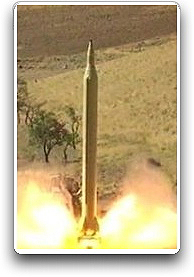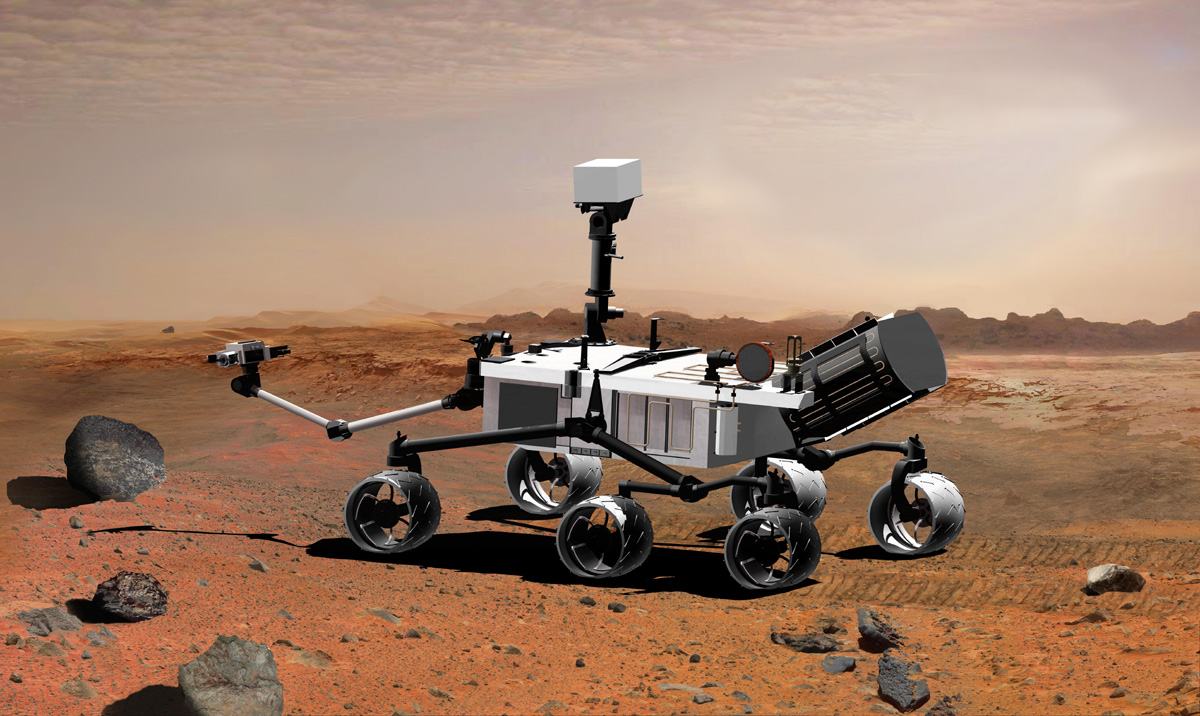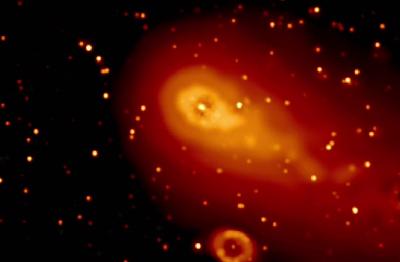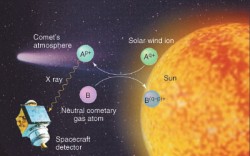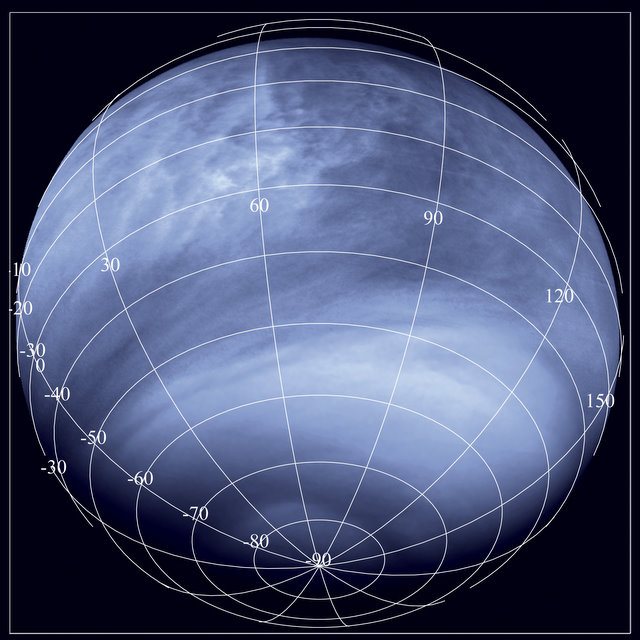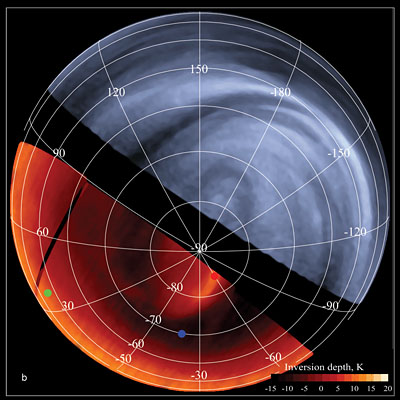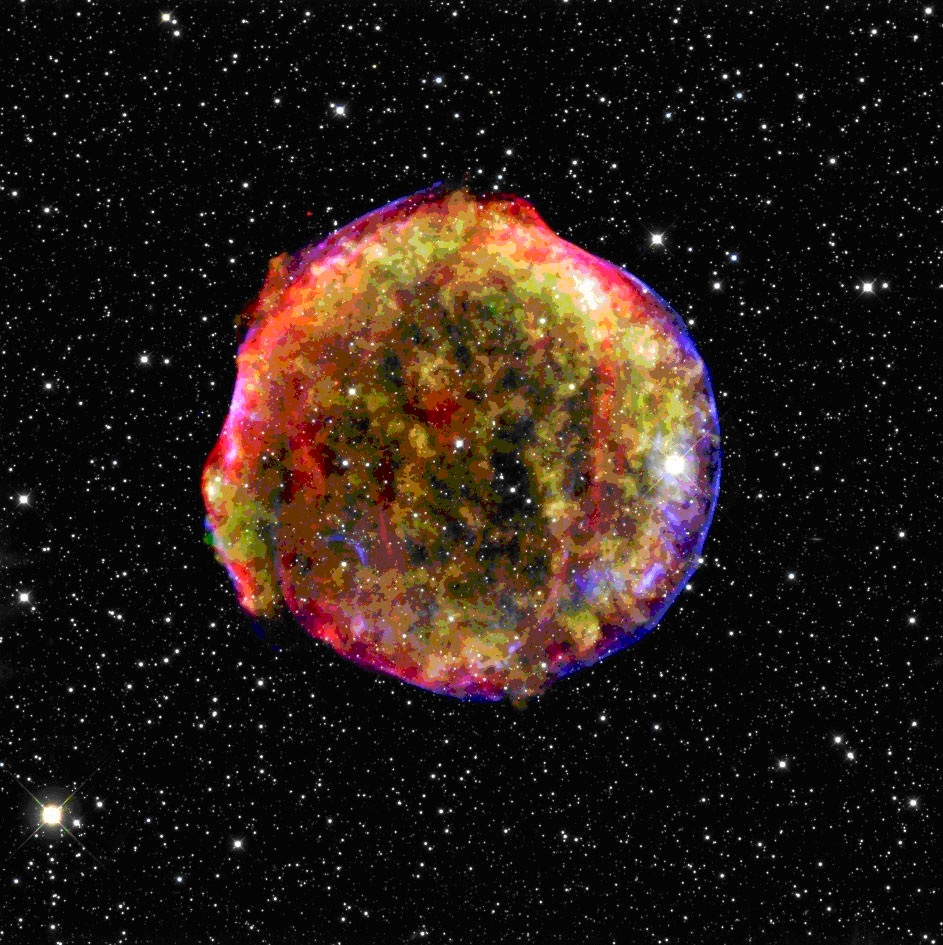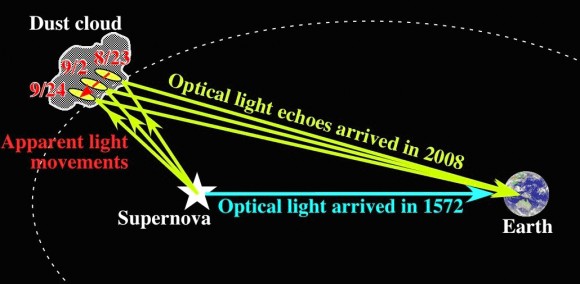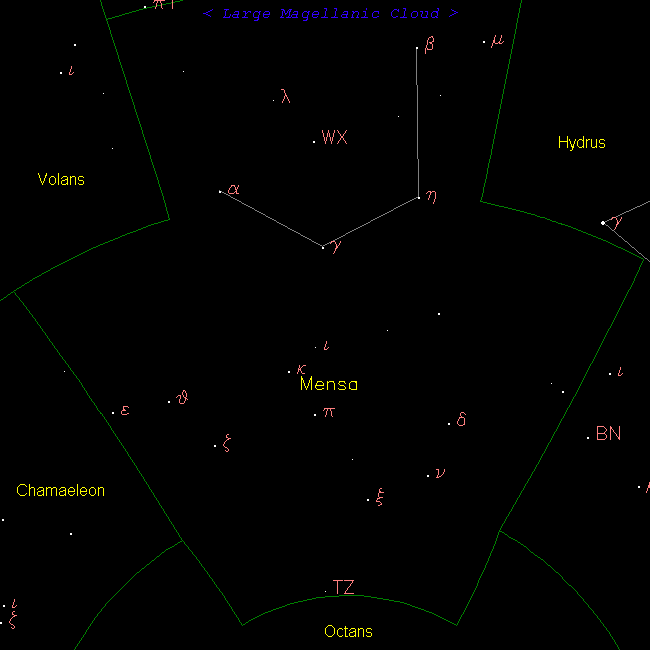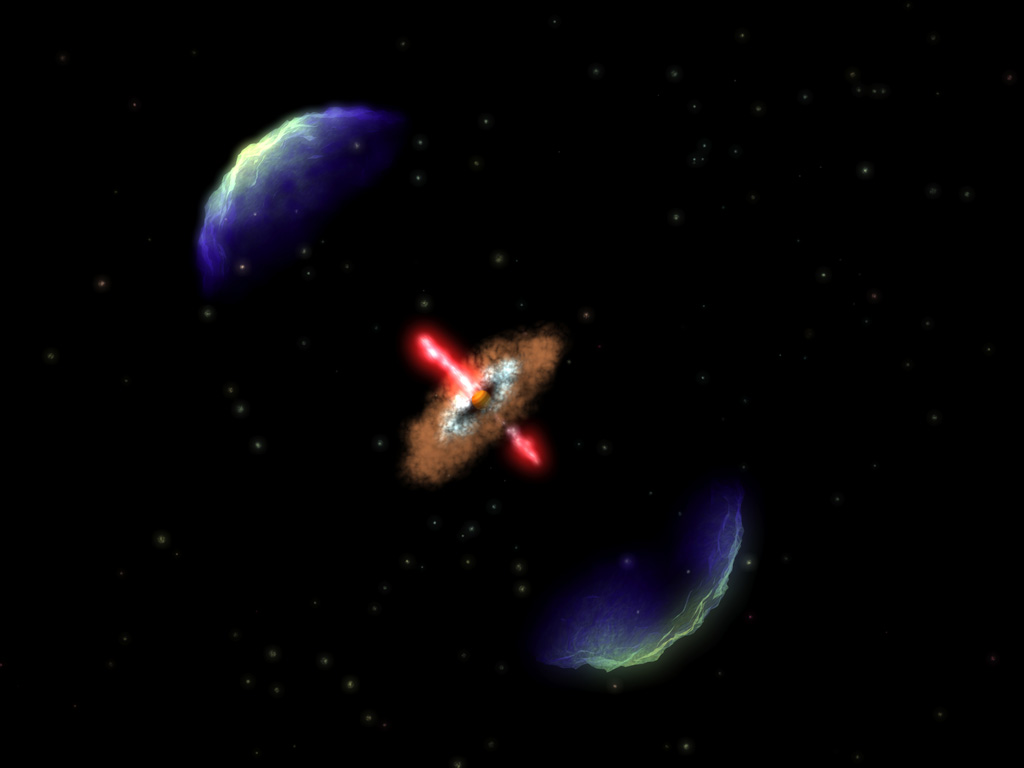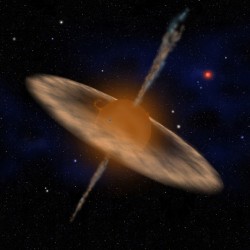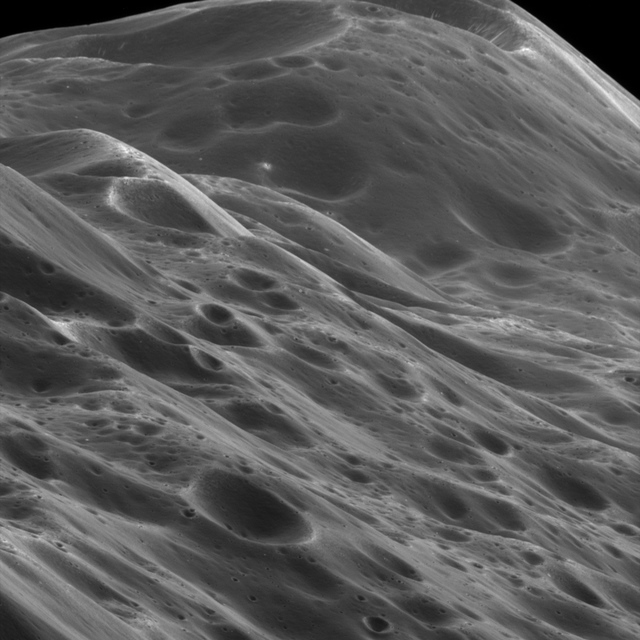[/caption]
The southern circumpolar constellation of Mensa was created by Nicolas Louis de Lacaille and was originally named Mons Mensae. It was later changed and adopted by the International Astronomical Union and accepted as one of the permanent 88 modern constellations. Mensa encompasses only 153 square degrees of sky – ranking 75th in size. It possesses no bright stars and only 4 stars form its cup-shaped asterism. There are, however, 16 Bayer/Flamsteed designated stars within its confines. Mensa is bordered by the constellations of Chamaeleon, Dorado, Hydrus, Octans and Volans. It is visible to observers positioned at latitudes between +18° and ?90° and is best seen at culmination during the month of January.
There is an annual meteor shower connected with this constellation is called the Delta Mensids – so named because the meteors appear to radiate from a point in the sky close to the star Delta Mensae. The meteor shower begins on or about March 14 and lasts until about March 21. Studies have shown there may be two seperate meteoriod streams responsible for this shower – one which causes a maximum on or about March 18 and another on or about March 19 with the debris suspected to have originated from Comet Pons, which was visible in 1804. Just as Mensa isn’t much of a constellation, the Delta Mensids aren’t much a meteor shower, either… The maximum fall rate only averages about 1 to 2 per hour at most.
Since Mensa is considered a relatively “new” constellation, there is no mythology associated with it, but there are several legends about how it came to be so named. It is believed that Nicolas Louis de Lacaille called in “Mons Mensae” in honor of Table Mountain, which overlooked his home observatory in Cape Town, South Africa. Since the top of the flat mountain was often covered by clouds, and the stellar formation is topped by the Large Magellanic Cloud, the name seems to fit perfectly! There is also a tall tale of a man who loved to smoke his pipe – but his wife forbid him to in the house. As a result, he would climb to the table mountain to enjoy the view while he smoked and one fine day he met the devil. Of course, he bragged how much he could smoke, so they engaged in a contest. The result left the mountain in a fog and the Magellanic Cloud in the stars! Other legendary tales suggest that our neighboring galaxy is either a god or a monster left on the high hill to guard the cape from unwary travelers… But no matter how Mensa came about its name, it is still a very faint constellation and will require patience and practice to see.
When you are ready, let’s start with a binocular tour of Mensa and its brightest star, Alpha – the “a” symbol on our map. Just barely visible to the unaided eye at magnitude 5.09 Alpha Mensae is a main sequence dwarf star located about 33 light years away from Earth. Shining away at about 80% the luminosity of our own Sun, Alpha is very similar. It is also a slow stellar rotator, taking about 32 days to complete a full rotation on its axis. At around 10 million years old, it comes within 7% of being about the same size as Sol, too… But we better enjoy it while we can. Even as we speak, Alpha Mensae is heading away from us at a speed of 35 kilometers per second!
Now aim your binoculars towards Beta Mensae – the “B” symbol on our map. Beta has the distinction of being a foreground star on the southern edge of the Large Magellanic Cloud! It’s a G-type giant star – again similar to our own Sun. What’s that? Try a main sequence star that’s happy in the “Yellow Evolutionary Void”. Unlike Alpha, it’s a lot further away… About 640 light years from our solar system.
Next stop? Pi Mensae – the “TT” symbol on our map. Pi is a yellow subgiant star with a high proper motion. Located approximately 60 light years away, Pi simply dwarfs our Sun in terms of mass, size, luminosity, temperature, and metallicity, yet it’s 730 million years younger! What makes it special? Pi ranks 100th on the list of top 100 target stars for the planned Terrestrial Planet Finder mission. On October 15, 2001, that search became successful when one of the most massive superjovian planets (HD 39091 b) ever found was discovered orbiting Pi Mensae. While it currently has a very eccentric orbit and takes approximately 2064 days (5.65 years) to revolve around its parent star, it does pass through a habitable zone – which means it probably would have disrupted the orbits of Earth-like planets long ago, either sending them into the parent star, or off into interstellar space.
While touring Mensa in binoculars, be sure to take in the full depth and breadth of the Large Magellanic Cloud which also crosses into Dorado. For a telescope challenge, try locating an open cluster in another galaxy! NGC 1711 (RA 04:50:36.0 Dec -69:59:06.0) is a very rich, 10th magnitude galactic star cluster which borders on the edge of being globular. It is actually a very young object whose data serves as a base for the study of mass functions and for the comparison with theoretical cosmological models.
For even more telescope challenges, try globular cluster NGC 2019 (RA 05:31:56:0). Also at home in the LMG, this small, bright-cored globular is a worthy target for mid-sized telescopes. Other globular clusters include NGC 2134, NGC 2065, NGC 2107, NGC 2058, NGC 1943, NGC 1987 and NGC 2121 in descending order of magnitude. These were all discovered by Sir William Herschel and are all located in the Mensa portion of the LMG.
Mensa is also home to quasar PKS 0637-752 (RA 06:35:46 Dec -75:16:12) – the first study of the Chandra X-Ray Observatory. When gathering first light on August 15, 1999, Chandra presented the world with a pair of images which revealed the quasar PKS0637-752 – a bright distant galaxy. Quasars like this are fairly “normal” galaxies which contain an active and massive black hole at its center. The brightness of the quasar is a result of material falling into the black hole. As well as the bright core of emission around the black hole, these images revealed a jet of material ejected from the black hole undergoing a remarkably sharp turn. With overlaying radio contours and optical images provided by Chandra, the newly revealed x-ray jet displayed the power far great than any radio jet ever recorded. It produces as much energy as 10 trillion Suns, all from a volume smaller than our own solar system!
Sources: Wikipedia, Chandra Observatory
Chart courtesy of Your Sky.

